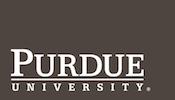Keywords
Gifted, Assessments, Elementary, Diverse, Underrepresentation, Identification
Select the category the research project fits.
Life Sciences
Is this submission part of ICaP/PW (Introductory Composition at Purdue/Professional Writing)?
No
Abstract
Evaluating Assessments for Elementary Level Gifted Students In the elementary level, the issue of underrepresentation of gifted students is commonly overlooked. Although we recognize that this issue is multi-determined, we focus on assessments that are currently used and might be considered ideal for detecting giftedness in elementary school students. Through detailed evaluation of six quantitative and qualitative assessments, we examine factors that may limit each assessment’s accuracy at identifying gifted students. Our analysis highlights how each measure gauges giftedness by addressing the purpose of each measure, its uses, and psychometric features. We suggest that multiple means of assessment may be the best way to accurately identify gifted students from culturally and economically diverse backgrounds. Incorporating a mix of both quantitative and qualitative assessments in the identification process is needed to reflect the multi-potentiality of students’ giftedness. Our findings have implications for practice as well as for the development and use of these assessments for research purposes.
Recommended Citation
Kim, Julie and Gavin, Madeline, "Gifted Assessments and Underrepresented Students: What is the Best Means of Assessment?" (2019). Purdue Undergraduate Research Conference. 5.
https://docs.lib.purdue.edu/purc/2019/Posters/5
Gifted Assessments and Underrepresented Students: What is the Best Means of Assessment?
Evaluating Assessments for Elementary Level Gifted Students In the elementary level, the issue of underrepresentation of gifted students is commonly overlooked. Although we recognize that this issue is multi-determined, we focus on assessments that are currently used and might be considered ideal for detecting giftedness in elementary school students. Through detailed evaluation of six quantitative and qualitative assessments, we examine factors that may limit each assessment’s accuracy at identifying gifted students. Our analysis highlights how each measure gauges giftedness by addressing the purpose of each measure, its uses, and psychometric features. We suggest that multiple means of assessment may be the best way to accurately identify gifted students from culturally and economically diverse backgrounds. Incorporating a mix of both quantitative and qualitative assessments in the identification process is needed to reflect the multi-potentiality of students’ giftedness. Our findings have implications for practice as well as for the development and use of these assessments for research purposes.

